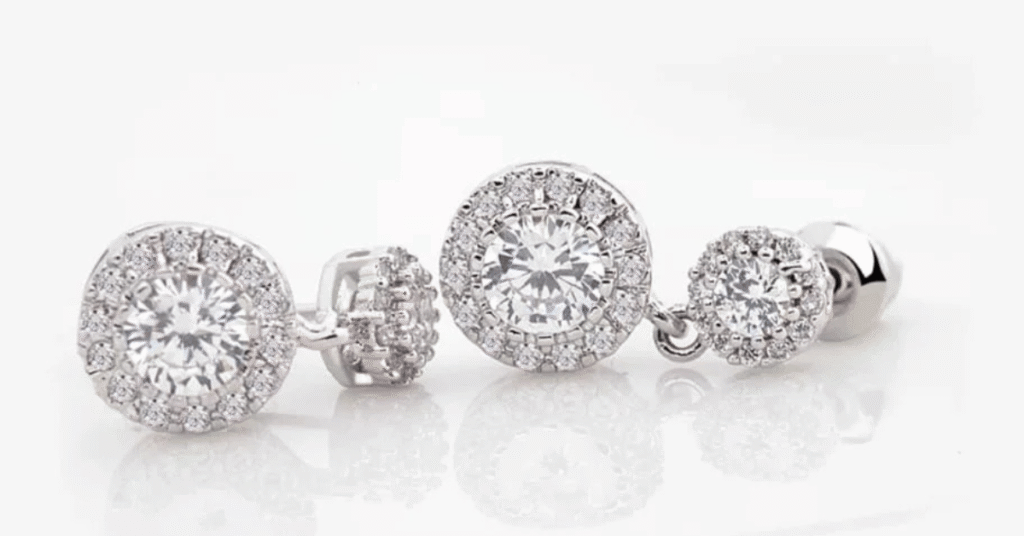In a world driven by innovation, the term Fab Diamond has emerged as more than a trend—it represents a technological leap. For anyone searching to understand what Fab Diamond really is, here’s the answer: it refers to engineered or fabricated diamonds created through advanced technological processes, offering superior control, properties, and utility over naturally occurring diamonds. These diamonds are not mined but grown or structured in high-precision environments, making them ideal for everything from electronics to quantum computing. This article explores the Fab Diamond revolution, its underlying science, wide-ranging applications, and how it is redefining value and function across industries.
Fab Diamond at a Glance
A Fab Diamond, short for “fabricated diamond,” represents a man-made diamond synthesized through technological processes such as Chemical Vapor Deposition (CVD) or High Pressure High Temperature (HPHT). Unlike cubic zirconia or moissanite, which are simulants, fab diamonds are chemically identical to natural diamonds but offer benefits in control, purity, and scalability. Think of them as diamonds crafted in a laboratory with nature’s blueprint but human precision.
How Fab Diamonds Are Made
Creating a fab diamond is not an imitation act—it’s a re-creation of the Earth’s most intense geological processes under engineered conditions.
1. High Pressure High Temperature (HPHT)
This method replicates the natural diamond-forming environment deep within Earth. Carbon is subjected to pressures over 5 GPa and temperatures above 1,400°C using a metallic catalyst.
2. Chemical Vapor Deposition (CVD)
A more recent method, CVD starts with a diamond seed in a vacuum chamber filled with carbon-rich gas. Using microwave energy, the gas breaks down and deposits carbon atoms onto the seed, gradually forming a diamond layer by layer.
Both methods yield diamonds with unique properties, and both are widely adopted for various purposes, including high-purity industrial materials and gem-quality stones.
Natural vs. Fab Diamonds
The core distinction between a natural and a fab diamond lies in origin—not composition. Natural diamonds take billions of years to form, while fab diamonds can be created in weeks.
| Feature | Natural Diamond | Fab Diamond |
|---|---|---|
| Formation Time | Billions of years | Weeks |
| Origin | Earth (mined) | Laboratory (engineered) |
| Purity Control | Variable | High |
| Environmental Impact | High | Low |
| Ethical Concerns | Conflict zones | None |
| Customization | Limited | Extensive |
| Industrial Use | Moderate | High |
| Cost | Expensive | Affordable (increasingly) |
| Defects and Inclusions | Natural imperfections | Controlled or eliminated |
Material Science Behind Fab Diamonds
Fab diamonds are composed of carbon atoms arranged in a crystal lattice known as the diamond cubic structure. This alignment gives them extreme hardness (10 on Mohs scale), high thermal conductivity, and optical transparency. But unlike mined diamonds, fab diamonds can be engineered with specific features such as nitrogen-vacancy centers for quantum sensors or isotopically pure carbon for nuclear applications.
Engineered Purity
In CVD-grown diamonds, impurities can be meticulously controlled, allowing near-perfect crystals ideal for laser systems and semiconductors.
Scalability and Precision
By adjusting gas composition or pressure settings, fab diamonds can be designed with bespoke characteristics, from color to clarity to conductivity.
Industrial Applications of Fab Diamonds
Diamonds are more than decorative gems—they’re performance materials. Fab diamonds have rapidly gained prominence in industries demanding extreme durability and performance.
1. Cutting and Drilling Tools
Diamond-tipped tools for industrial drilling, especially in oil, gas, and construction, now use fab diamonds due to consistency and cost-efficiency.
2. Heat Spreaders
Their unmatched thermal conductivity makes fab diamonds ideal for heat spreaders in high-performance computing and LED devices.
3. Laser Optics
High-purity fab diamonds are used in laser windows and lenses, enhancing the lifespan and performance of optical instruments.
Fab Diamonds in Electronics and Quantum Computing
Perhaps the most disruptive promise of fab diamonds lies in electronics and quantum technologies.
Semiconductors
Diamond has a bandgap of 5.5 eV—far greater than silicon (1.1 eV)—making it a dream candidate for next-gen semiconductors. Fab diamonds enable this by offering scale and purity.
Quantum Sensors
NV (Nitrogen-Vacancy) centers in fab diamonds allow them to act as quantum sensors capable of detecting magnetic fields at nanoscale, useful in brain imaging and navigation.
Photonics and Quantum Repeaters
Fab diamonds can store and manipulate quantum information, making them a frontier material for quantum networks and data encryption.
Impact on the Jewelry Industry
Fab diamonds have already begun reshaping how we view luxury.
Affordability Meets Ethics
With prices 30–40% lower than mined diamonds and zero association with conflict zones or environmental degradation, fab diamonds offer conscious luxury.
Customization at Scale
Want a blue or pink diamond without the million-dollar price tag? Fab diamonds can be engineered in any color using boron or nitrogen doping.
Retail Shifts
Major brands like De Beers and Pandora have entered the fab diamond market, validating its presence and securing its future in consumer markets.
Environmental and Ethical Benefits
Mined diamonds leave scars—both literal and social. Fab diamonds, on the other hand, present a clean break from destructive practices.
Environmental Savings
A single carat of mined diamond consumes over 120 gallons of water and releases 125 pounds of carbon. Fab diamonds? Less than 20 gallons and nearly carbon-neutral with renewable energy.
Labor Practices
No child labor, no war-fueled economies, no unsafe working conditions. Fab diamond facilities offer monitored, ethical production standards.
Challenges in Scaling Fab Diamond Technology
Despite their promise, fab diamonds face hurdles.
1. Equipment Costs
Building CVD or HPHT systems involves multimillion-dollar investments, making entry barriers steep.
2. Consumer Skepticism
Despite being chemically identical, some buyers still see fab diamonds as “fake” due to cultural perceptions.
3. Technical Uniformity
Achieving uniform quality in large fab diamond wafers or large gemstones remains challenging, though advancing rapidly.
Future of Fab Diamonds: Innovations on the Horizon
The fab diamond industry isn’t just growing—it’s evolving.
1. Diamond Electronics
Startups are exploring diamond transistors that can operate at higher voltages and temperatures than silicon.
2. Biocompatible Sensors
Due to its inert nature, diamond is emerging as a biocompatible material for neural probes and implants.
3. Space Applications
NASA has studied diamond’s use in radiation shielding and robust optical systems for satellites.
Fab Diamond in Aerospace and Defense
In aerospace, every gram counts, and every component must endure extremes. Fab diamonds are ideal for:
- Lightweight infrared windows
- Radiation-hardened chips
- Durable coatings for propulsion systems
In defense, they enhance:
- Laser targeting systems
- Bullet-resistant armor
- Advanced optics in surveillance drones
Comparative Table: Natural Diamond vs Fab Diamond
| Aspect | Natural Diamond | Fab Diamond |
|---|---|---|
| Ethical Concerns | High | Low |
| Price Stability | Volatile | Stable |
| Technological Application | Limited | Expansive |
| Resource Depletion | Significant | Minimal |
| Time to Market | Years (mining process) | Weeks (lab processes) |
| Clarity Customization | None | High |
| Suitability for Quantum Tech | None | Ideal (NV centers) |
Conclusion: The Shape of Brilliance to Come
Fab diamonds represent more than a shift in manufacturing—they mark a shift in values, utility, and vision. Where natural diamonds symbolize permanence and rarity, fab diamonds embody evolution and intent. From revolutionizing quantum computers to changing how we define luxury and ethics, fab diamonds are no longer the future—they are the now. As the lines between material science and societal needs converge, the fab diamond stands as a crystalline intersection of innovation, responsibility, and brilliance.
FAQs
1. Are fab diamonds real diamonds?
Yes. Fab diamonds are chemically, physically, and optically identical to mined diamonds.
2. Can fab diamonds be used in engagement rings?
Absolutely. They are increasingly popular due to ethical sourcing and customizable beauty.
3. Do fab diamonds last as long as natural diamonds?
Yes. They have the same hardness and durability, ensuring lifetime use.
4. Are fab diamonds used in electronics?
Yes. They are critical in quantum computing, semiconductors, and high-performance heat management.
5. Will fab diamonds replace natural diamonds?
In many industries, yes. In luxury markets, they are rapidly gaining ground as preferences shift toward sustainability and affordability.







